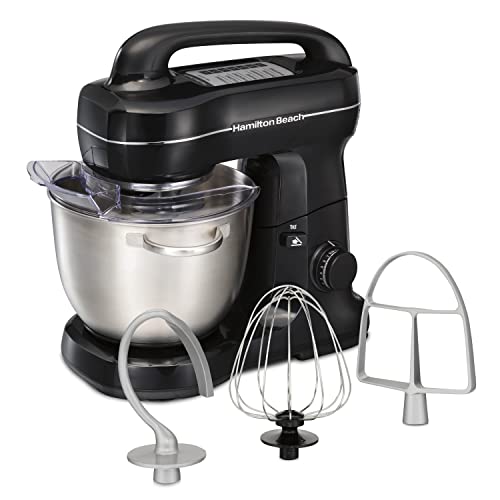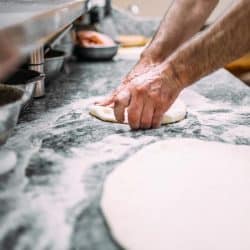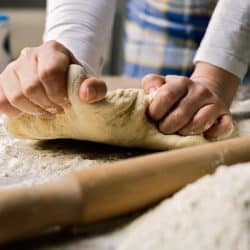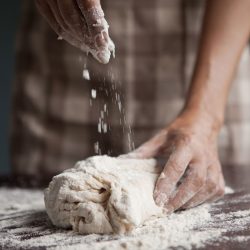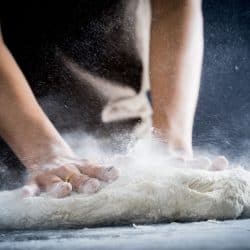Making your own pizza at home is an absolute delight - you get to enjoy making your favorite treat from scratch! But a sticky dough can take all the fun out of whipping up your own homemade pizza. How do you fix this? We've consulted culinary connoisseurs on the web to give you the answer.
Sticky pizza dough is often a result of excess or incorrect hydration, under-mixing, and too little kneading. A few quick ways to fix this include:
- Adding flour
- Kneading or mixing more
- Using warm water
Each solution above involves extra care and exact measurements, so make sure to keep reading to find out how to fix your sticky pizza dough properly! We'll also discuss how to prevent this from happening so you can make the perfect pizza dough next time around.

How To Fix Sticky Pizza Dough
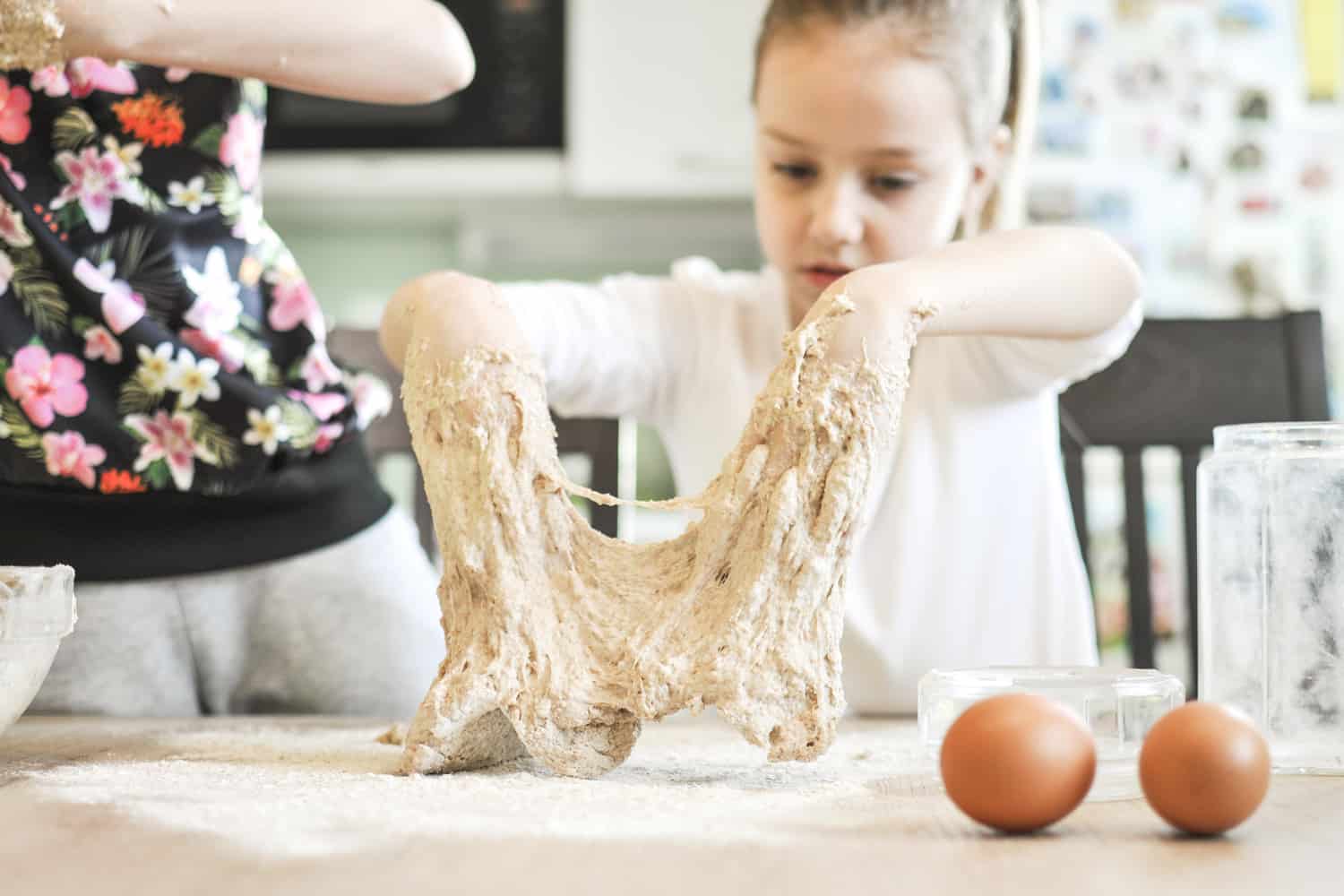
Let's face it - no one wants to deal with sticky pizza dough. But if you've found yourself in such a predicament, don't worry. Most pizza dough beginners have to deal with this mishap, and the good news is there are ways to fix it!
Here are a few remedies for sticky pizza dough:
1. Adding flour
The most common reason why pizza dough gets too sticky is because of excess hydration. Pizza dough hydration refers to the total amount of water in relation to the amount of flour in the dough.
For instance, if you have 800g of water in 1,000g of flour, this means your pizza dough has 80% hydration. You can break this down into a simple mathematical equation: simply divide the weight of the water by the weight of the flour. Then, multiply the answer by 100.
So what's the right amount of pizza dough hydration? Most bakers recommend around 65% to 68% hydration for a pizza crust that's soft with the right amount of crisp.
Now if you've already added too much water, the remedy is simple: add more flour! But keep in mind that you should be careful and precise with this step, as adding too much flour can make the dough too dry.
What you can do is add a tablespoon of flour to the dough. Knead it for a few minutes. If the dough is still too sticky, add another tablespoon and knead it again. Do this until the dough no longer sticks to your hands but is still firm and slightly wet to the touch.
2. Kneading or mixing more
Under-kneading or under-mixing can also lead to gummy, sticky dough. Kneading for the right amount of time improves the gluten structure and allows it to develop properly. As a result, the dough becomes strong and elastic enough not to break apart when you stretch it.
It's important to knead the dough for at least 3 to 10 minutes by hand or 8 to 10 minutes with a stand mixer. You'll want to knead your dough until it achieves a smooth, tight consistency.
Find out more about how to knead your dough properly by taking a quick peek at this article: "For How Long Should You Knead Pizza Dough?"
3. Using warm water
Warm water hydrates the yeast and releases gluten, allowing all the ingredients in the dough to bond tightly together. Conversely, cold water makes gluten in the dough leak out. This will result in a sticky dough that's nearly impossible to handle.
Unfortunately, if you used cold water for your pizza dough, there's no way to salvage it. You'll have to make your pizza dough again from scratch, this time with warm water.
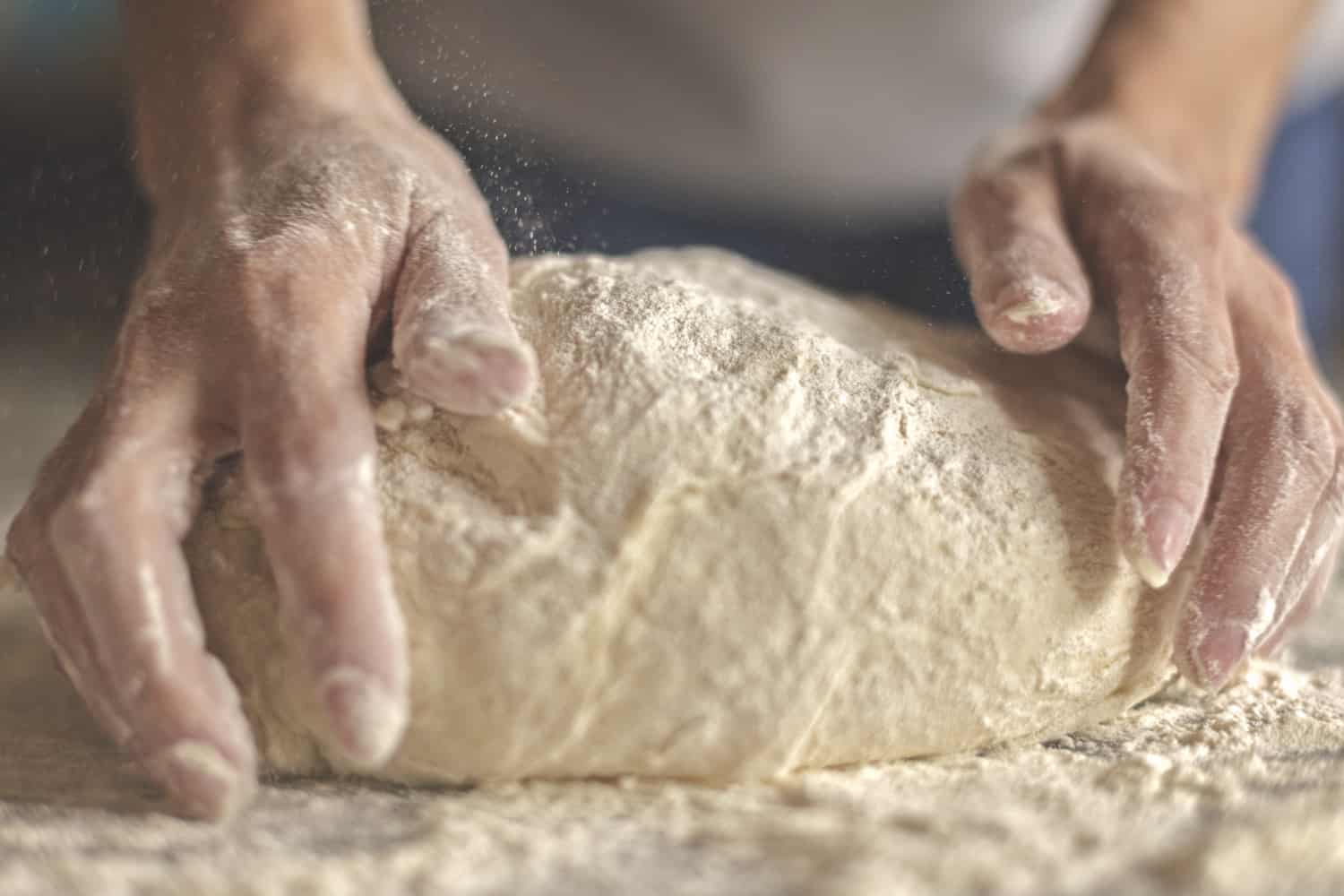
Ways To Prevent Sticky Pizza Dough
Learning from your mistakes is key to becoming a pro at pizza dough! After learning how to fix sticky pizza dough, it's important to find out how to avoid it in the first place.
Here are a few tips and tricks to prevent sticky pizza dough:
Ensure proper dough hydration
Before you mix flour and water to make your dough, remember to consult the hydration equation mentioned above and see to it that your dough's hydration is within the recommended range of 65% to 68%. This way, you'll get a mouthwateringly crispy, light crust!
Keep in mind that hydration levels also vary based on flour type and pizza style. For instance, Neapolitan style pizza uses Italian 00 flour which will require 55% to 62.5% hydration. New York Style pizza, on the other hand, uses high gluten bread flour which will require 60% to 65% hydration.
If you're following a recipe, a good tip is to use only 60% to 75% of the water in the instructions. This is especially useful if you're working in an environment with high humidity levels because the dough will absorb moisture from the surroundings.
Adding less water than instructed will help prevent the dough from being too hydrated and becoming too sticky as a result. As you knead the dough, you can get a feel of whether it's too dry and add water gradually.
Use a stand mixer
Not only will a stand mixer save you from the fatigue of kneading dough yourself, but it will also ensure more precise and equal mixing for all parts of the dough. Make sure to set it on low to slowly incorporate all the ingredients into a firm dough and prevent over-mixing.
Check out this stand mixer on Amazon.
Knead the dough properly
If you're not willing to invest in a stand mixer, you can simply make sure that you knead your dough properly to prevent sticky dough.
Take your time in doing this until the dough is smooth and tight. Remember to coat your hands and your worktop surface with dough to prevent sticking and ensure even kneading.
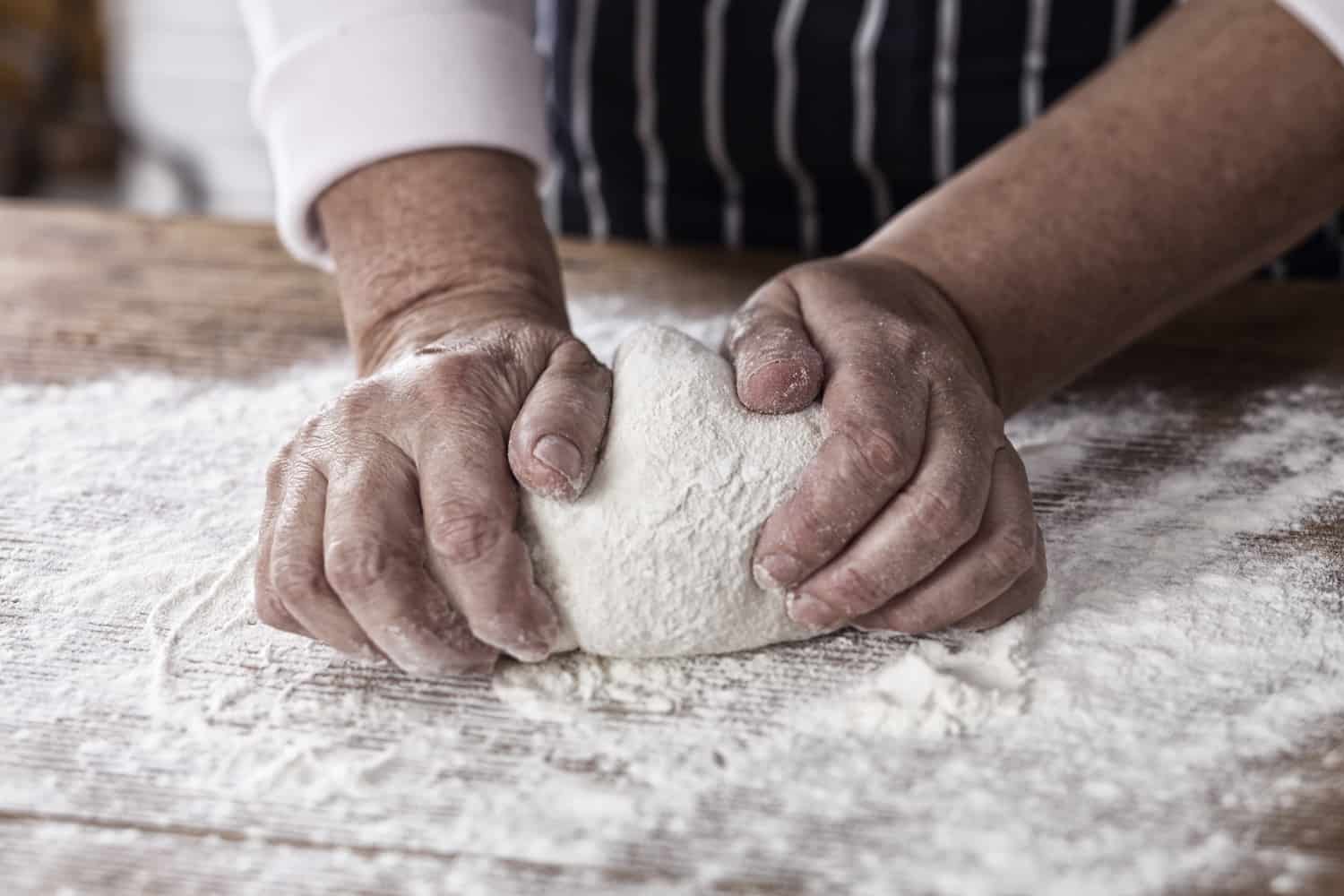
Allow the dough to rest
Letting the dough rest after kneading is crucial since it gives the gluten time to develop, thus making it more elastic and less sticky. This means it'll be easier to shape and stretch.
Leave your dough to rest and rise in the fridge for a few hours or overnight. Many bakers consider 24 hours the most optimal amount of time to let pizza dough rise.
Pro Tip: remember to let the dough warm up to room temperature once you take it out of the fridge before working with it.
Add a little oil
In some cases, adding a little oil to the mixing bowl or to the dough itself can do wonders in making it less sticky! Some bakers also apply oil on the worktop surface as they knead and roll the dough to help it firm up.
Get dough scrapers
Some bakers prefer a stickier pizza dough despite it being difficult to work with. This is because it typically yields a soft, light, and fluffy crust.
If this sounds appealing to you, consider getting dough scrapers! These tools will keep the dough from sticking to your hands or to your worktop surface, making it easier to work with.
Check out these plastic dough scrapers on Amazon.
What can I use to make pizza dough not stick?
There's nothing worse than when your pizza sticks to and refuses to come off the pizza peel! Here are a few ways to prevent this:
Sprinkle peel dust on the pizza peel
Choices for this include regular flour, semolina flour, and cornmeal. While some people swear by cornmeal as peel dust, be careful not to use too much of it as it can burn on the pizza stone. A good way to prevent this is by mixing it with regular flour and semolina flour.
Other alternative options are wheat bran and rice flour.
Don't prep your dough on the pizza peel
Use a different surface to work your dough so that it doesn't stick to the pizza peel. Dust your work area with flour as well to keep the dough from becoming too sticky.
Choose a wood peel
Wood peels or composite peels made from wood and resins make better peel choices than metal, as your dough may stick more readily to metal than to wood.
If you're not willing to switch out your metal peel, make sure to act quickly and not let the pizza cook inside the oven for too long.

Can I roll pizza dough?
You can roll pizza dough if you want a flat and thin crust. However, hand-stretching typically results in better dough consistency and crust texture.
Looking to dive deeper into this topic? Check out this article: "Should You Roll Or Stretch Pizza Dough? Pros & Cons Revealed."
How do I get more air in my pizza dough?
If you want air bubbles in your pizza dough, make sure not to use a rolling pin. This will flatten your dough completely and remove all the air pockets from it. What you should do instead is to stretch out the dough by hand gently, creating air bubbles in the dough.
Adding sugar to your dough, along with adding baking soda to crushed ice and using it for your dough, will also help bubbles form.
It's also important to let your dough sit for 24 to 48 hours after kneading and shaping to achieve a light and airy crust.
The Wrap-Up
Getting your pizza dough right takes a lot of time and practice, but achieving the perfect crust makes the journey worth it. Remember to experiment with different ingredients and try different recipes to help you discover what works best for you!

